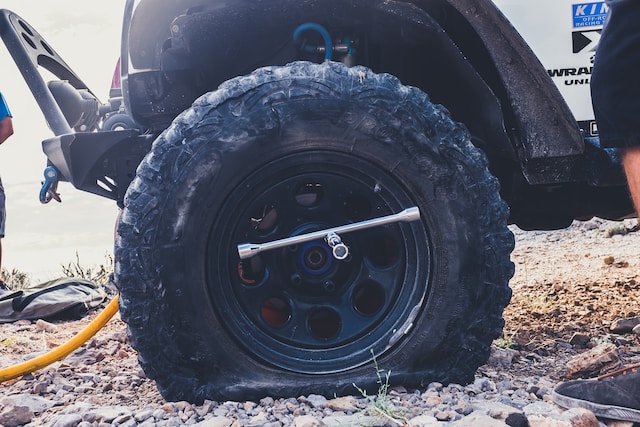One of the must-have tools for off-roaders and other off-road ventures is a high lift jack. It is ideal for escaping some of the worst situations like mid, snow, rugged terrains, etc. With a high lift jack, you can technically conquer all the terrain with different off-road vehicles. Being a multitasking tool, you can use it for various roles like lifting the car, towing, wheel replacements, getting off sinking grounds, etc. Despite its versatility, it is only effective when properly maintained so that it functions effectively whenever you need to get out of a mess.
It has a simple look with few movable parts, which can deceive you into using it in any condition and disguise it as if it does not need much care. However, the lack of care can affect its efficiency and suitability, i.e., the movable parts can easily get clogged, affecting its ability to lift. Therefore, for effectiveness and to ensure it fully addresses all your needs, here are some maintenance guidelines you must always remember.
Oiling Movable Parts
The high-lift jack has various movable parts to lift the car up and down in all situations. Since it is used in some of the worst weather conditions, it is much easier for various components to rust. The rust affects the ability of the levers to move up and down and can also clog essential areas like bolts, making it difficult to tighten.
If the jack moves up and down slowly, this could be a sign that it is rusty, hence the need for lubrication. A lubricated one can move smoothly, enabling you to lift the car without exerting more energy.
When buying a lift jack, always get one made from rust-free components. A quality high-lift jack should be steel and coated or painted to prevent rusting. Check the nature of the paint and type of metal used to ensure you have one that would hardly rust. Despite meeting all these features, you must lubricate frequently and focus mainly on the bolts and movable sections.
Cleaning the Jack
After using the high lift jack, you should clean it immediately before you store it at the back of the truck. Most people intend to carry the tools home; however, this is not advisable. When left dirty longer, the mud can settle in some places, leading to clogging, and the dirt may be sticky and trigger other issues like rusting.
You do not need advanced tools to clean the jack; dip it in water to wash away all the dirt. After washing, allow it to dry before storing or adding it to other tools. When cleaning, focus on the crevices and hidden areas where the mud can settle, further clogging the devices. Whenever you notice any rust, clean the jack effectively to remove it. Next, you can oil it or repaint it to avoid exposure to water and air.
Extra Safety Essential
Jacks are ideal for lifting vast amounts of weight; however, you must ensure the weight is within the stipulated guidelines and weight capacity. Using the jack to lift more than the recommended weight can lead to some safety concerns. One of the damages to the jack is bending as the weight overwhelms the lift jack.
Once bent, it can no longer function or lift effectively. Therefore, when buying the jack, pay attention to the car’s weight to avoid pressing all that weight on the lift jack. Also, when using it, ensure the jack is located on one side and closer to the wheel. This will enable the jack to lift by moving and tilting the weight to the other side. Effective positioning prevents the jack from absorbing all the weight, which could easily lead to bending.
When using it, do not put the jack on the car’s weak points. Instead, anchor it on the metallic areas to lift without affecting the car’s structural integrity.
Bolting the Jack into Position
Whenever you use the jack, the greatest concern is ensuring it does not sink into the ground, leading to clogging and damage. Once you set the ground in which the base of the jack can rise, you need to put the bolt below the jacking mechanism. This will enable you to lift the car without affecting the jack’s stability or sinking into the ground. Ensure the wheel is closer to the jack to support the extra weight should the need arise.
Using the bolt to anchor and hold the jacking mechanism ensures the car remains in position and does not move downwards. This can prevent accidents or other subsequent damages to the jack as it is faster than normal due to the excess weight exerting pressure. You do not want the car falling on you or overwhelming the jack, pushing it deeper into the muddy soil.
Proper Storage
Ordinarily, you should store the high lift jack amongst other car tools; however, it is bigger and more conspicuous, making it difficult to fit into the toolbox. For safety, you should follow the storage guidelines, including avoiding moisture and exposure to conditions that can easily lead to rusting. Always roll it in a bag or a storage case, that is, if you have a pickup truck. For other cars, you can store it in the trunk away from any fluids, leaks, and other conditions that can lead to rusting.
Conclusion
High lift jacks are more effective when oiled properly, straightened, and unclogged. With all these conditions, they can easily lift the car up and down, enabling you to accomplish your goals effortlessly. Also, ensure you store them effectively, free from conditions that can easily lead to rusting.







